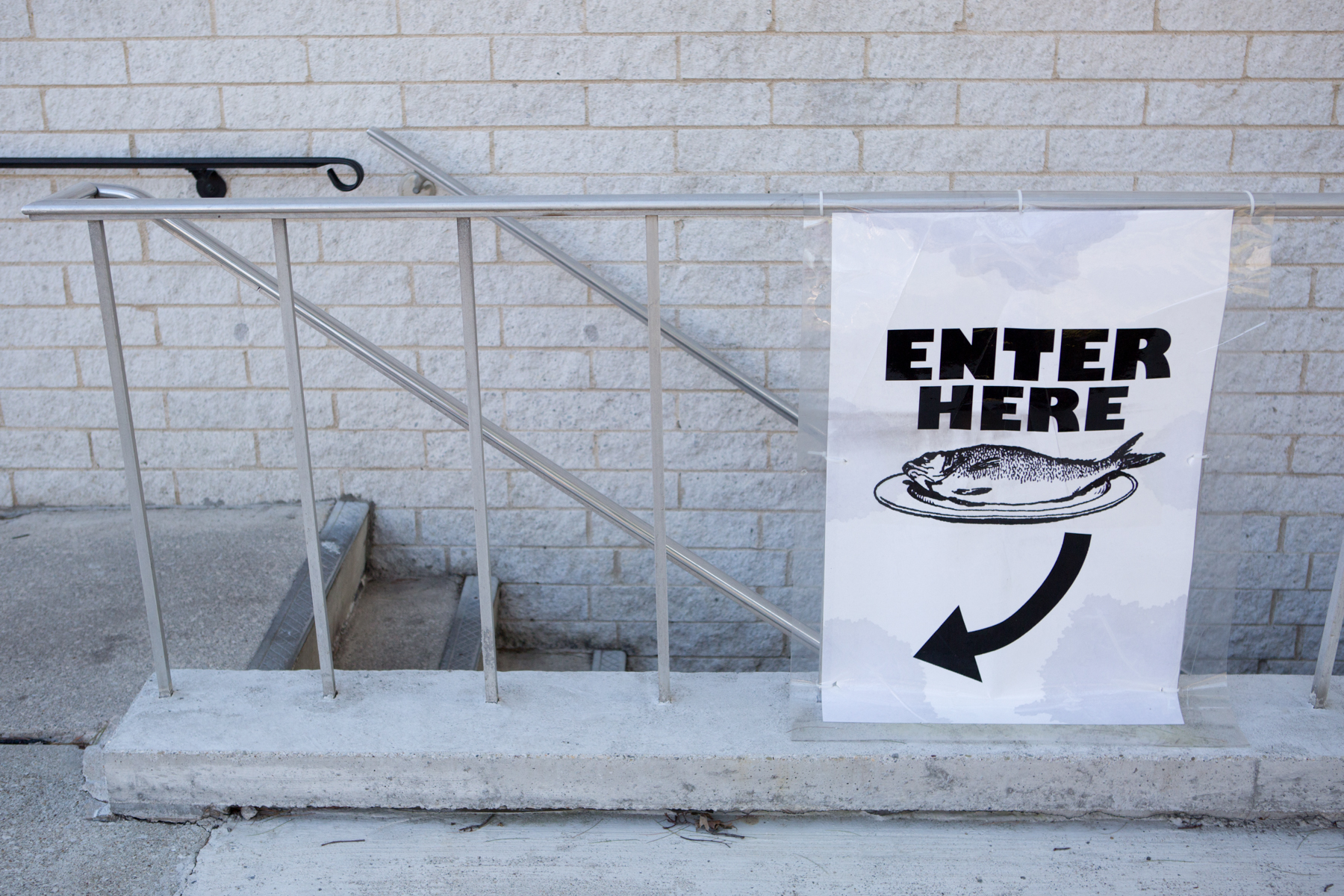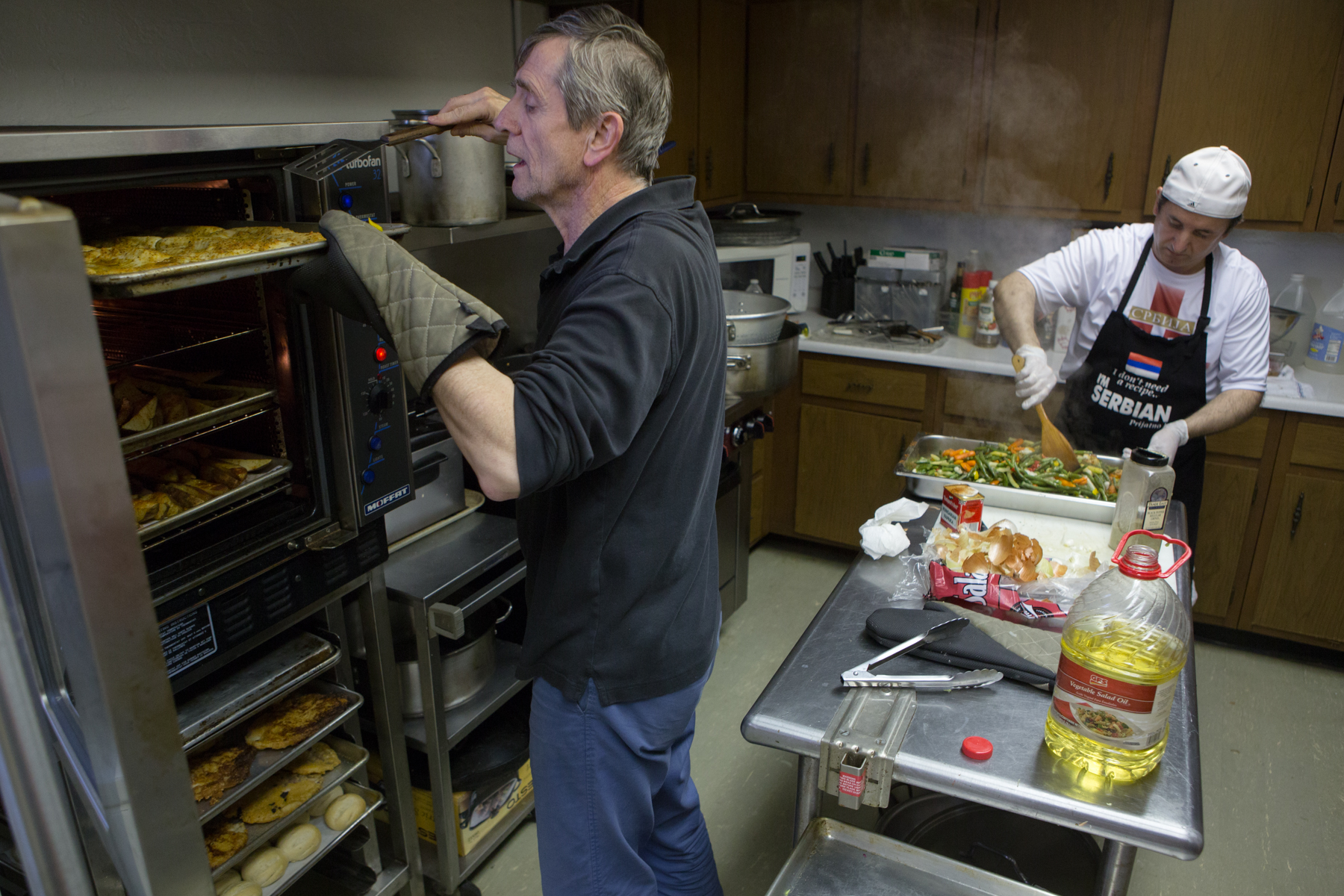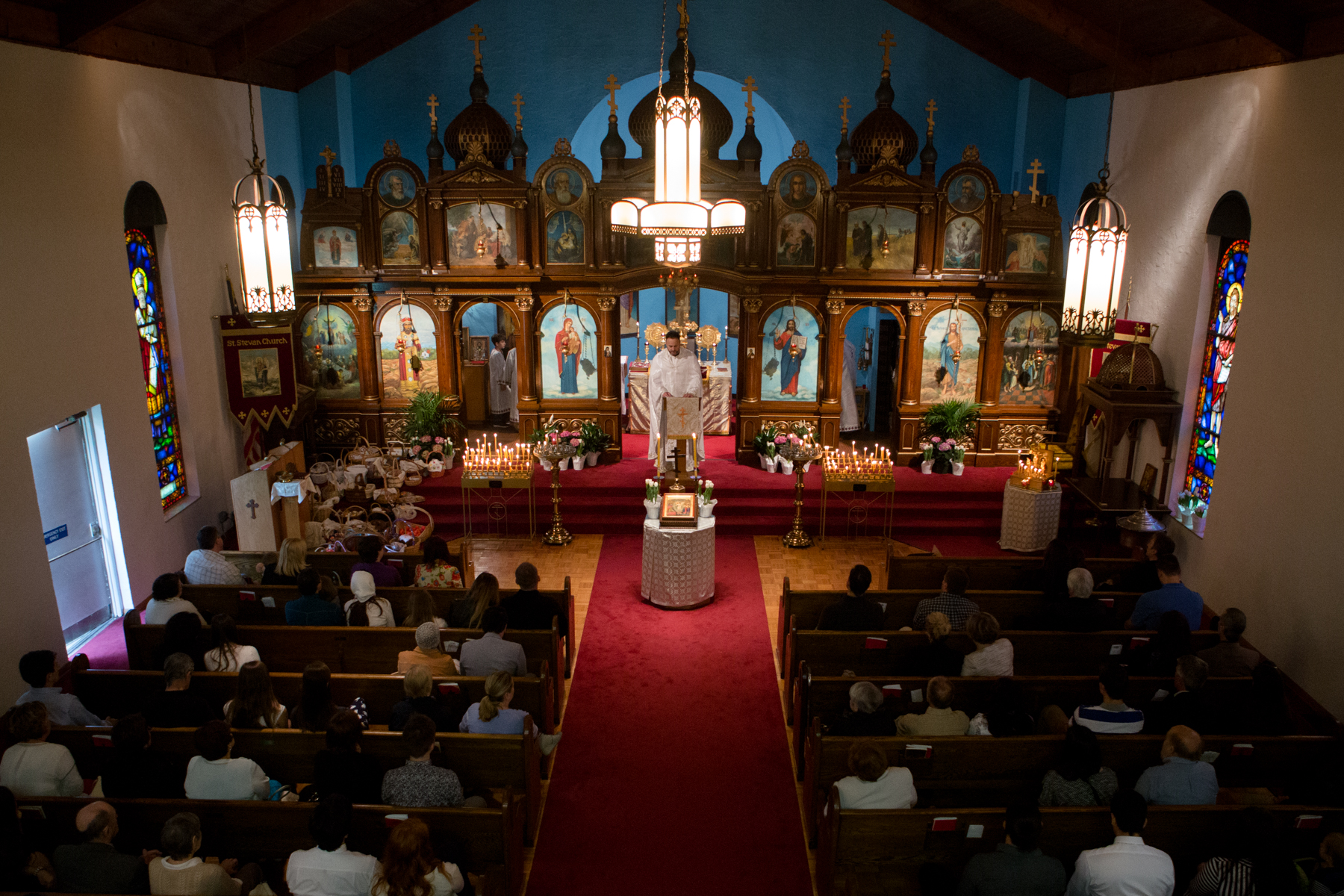



Lenten fish dinner preparations at the St. Stevan of Dechani Serbian Orthodox Church in March 2016.
Serbian Orthodox Lenten Dinner
By Lauren Pond
Within this rich sensory context of Eastern Orthodoxy, the sounds of the St. Stevan’s kitchen, located in the church basement, might not seem significant. However, listening to the activities unfolding in this space reveals the strong sociocultural elements of the parish, as well as its place in the local Columbus community, where it was founded in 1967.
Lenten fish dinners provide a valuable opportunity for this. Lent, the 40-day period between Ash Wednesday and Holy Saturday, honors the time that Jesus is believed to have spent in the wilderness before starting his ministry. In preparation for Easter, many Christians observe Lent through introspection, self-evaluation, fasting, and abstention, including from rich foods like red meat. Churches often serve milder meals as an alternative. On Lenten Friday evenings at the St. Stevan’s church, cooks Svet and Nenad diligently prepare baked and fried fish and a variety of side dishes, all of them made from scratch and free of meat and dairy products. Parishioners and the general public arrive in the adjacent dining room throughout the evening to purchase a plate and partake of the meal. All funds raised help defray the costs of food preparation and other church expenses.
“It’s getting people ready physically and spiritually, ready for the special religious event,” David Kos, who serves as the parish treasurer, said of the purpose of the meals.

Fr. Isak Kisin during Easter Divine Liturgy at the St. Stevan parish in 2016.
During the several hours of preparation for the Lenten fish dinners, one most prominently hears the staccato chopping of vegetables, the popping of hot oil, the back-and-forth between Svet and Nenad. These are the sounds of labor, and they speak to a high level of stewardship at St. Stevan’s. Managed by the church’s men’s fellowship and facilitated weekly by different families, who each bring homemade desserts, the dinners sonically convey a strong parish involvement in church life and the strengthening of bonds therein.
But just beneath the noise of food preparation waft the melodies of traditional Serbian music, which are playing on a boom box in a corner of the dining hall. Guests arrive, exchange pleasantries in their native tongues, and congregate around tables to enjoy Serbian beer and homemade dishes. These additional sounds allude to the strong ethnic ties of this parish, and its efforts to celebrate and preserve its Eastern European heritage. Although Serbian by name, the church also has parishioners of Russian, Ukrainian, Bulgarian, Romanian, Greek, and other backgrounds – about 50 families total, Kos explained.
“The music, the singing, and sounds from your culture that you have been born and raised with – it lends itself to the ambiance of the occasion,” he said. “Also, it tends to aid in the enjoyment of the meal.”
Observing the revelry of the Lenten fish dinners, it would be easy to think that these events have been a longtime tradition at this house of worship. In fact, they are a relatively new addition to the St. Stevan’s parish, which started hosting the dinners only about five years ago, Kos said. Fish is not frequently part of the menu in landlocked eastern Europe, where fruits and vegetables are the more common Lenten staples; to have fish as the focus of the Lenten meal is a more American tendency, he explained. It is one that St. Stevan’s is embracing with some success, attracting outsiders to visit and learn about the church. In this context, the sounds of the Lenten dinner assume additional meaning: They provide an audible fusion of traditions, alluding to the parish’s outreach to and integration with its surrounding American neighborhood.
“What we’ve done is we’ve kind of brought in something that is not necessarily a cultural religious tradition, and we’re kind of tied it into that,” Kos said. “[We] welcome both our own parishioners that may not ever have experienced this, as well as the public. And I think it’s been very well received.”
Audio recording, photography, exhibit design, and production by Lauren Pond

